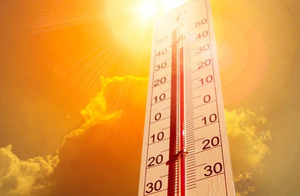America
Extreme Heat Sweeps Eastern US, Affects Tens of Millions

August 29 :
The eastern part of the US was hit hard by a late-summer surge of extremely hot temperatures on August 28, causing about 60 million people to be under heat alerts. Highs of about 100 degrees Fahrenheit (37.8 degrees Celsius) were predicted for the mid-Atlantic states, with the capital Washington experiencing record heat, according to the National Weather Service. However, this heat wave is expected to pass quickly as a cooler and damper front approaches from Canada.
Nevertheless, according to NWS, high temperatures will continue for a few more days, reaching the upper 90s in the hottest parts of the Ohio and Tennessee Valleys. X was updated with the locations of five cooling centers that were opened to assist the city's homeless population after the mayor's office declared a "code red extreme heat alert" in Baltimore. Those without shelter were also given cold water by the authorities.
In areas where heat is a "major" hazard, the CDC has issued a heat advisory advising people to seek shade, take frequent breaks, and limit their outdoor activities to the cooler parts of the day or night. The government also stated that people should limit their caffeine consumption, have a bottle of water on hand, and watch their urine color for symptoms of dehydration.
As a result of global warming, heat waves are becoming more common and more intense, and the heat season is getting longer across most of the US. The Environmental Protection Agency reports that heat-related diseases and deaths are mainly preventable through outreach and intervention; yet, heat remains the top weather-related killer in the United States.
The Journal of the American Medical Association published a study this week that indicated the United States had an increase in heat-related mortality rates from 1999 to 2023, with the most dramatic increase occurring in the past seven years However, the authors noted that there is likely still an underestimation of heat-related fatalities owing to data gaps on susceptible populations and the possibility of incorrect cause classifications.



































